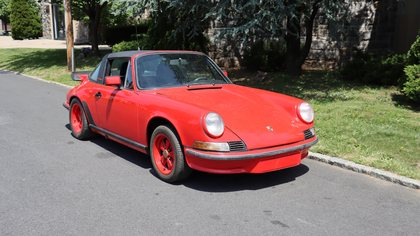1972 Porsche 911T Sunroof Coupe SOLD

1972 Porsche 911T Sunroof Coupe SOLD
- Left Hand Drive
- 61,074 Miles
- Manual, 5 speed
- Petrol
- 1972
- Black
- Dealer
- United States

This advert has now been removed through sale or otherwise. Please see the list below for similar live adverts.
Similar Porsche 911s
Check out our new listings and upcoming auctions by subscribing to our newsletter
By signing up you accept our privacy policy and conditions of purchase













